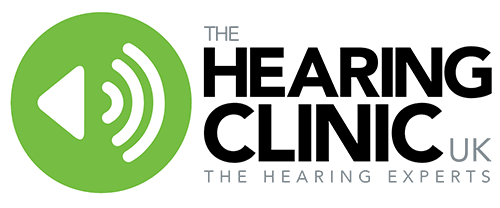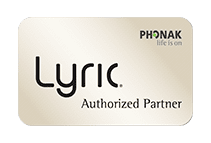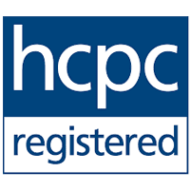Microsuction Ear Wax Removal
Hearing Aids
General Information
Microsuction Ear Wax Removal
Microsuction Ear Wax Removal at The Hearing Clinic UK is £60 and includes a complimentary Hearing Health Check.
Call us on 0333 320 7788 to book or book online.
Ear syringing is a traditional method of ear wax removal that is based on injecting water at a high pressure in the ear. Due to the pressure and lack of visibility, this method of ear wax removal runs the risk of excess wax being left behind, perforated ear drums, tinnitus or even permanent hearing loss.
Here at The Hearing Clinic UK, we offer microsuction as a safer method of ear wax removal. The wax technician is able to see inside the ear to ensure the wax is being removed effectively and safely through using a specialised suction device. We also use video technology so that your clinician can clearly show you the inside of your ear canals before and after the procedure. Microsuction typically provides instant results.
As part of our Microsuction appointments we offer a complimentary Hearing Health Check.
Microsuction is the safest, most effective way of cleaning wax build up and any obstruction caused by foreign bodies down the ear canal. The procedure uses a sophisticated microscope which provides a magnified light source enabling the delicate structures of the ear canal to be viewed throughout the whole procedure.
Ear Wax removal using Microsuction is performed with the aid of an operating microscope and a finely calibrated suction device, without the introduction of any materials or liquids.
Microsuction is a very well tolerated by the majority of people, gives you fast results hence it is much more effective than the traditional wax removal methods. It is also one of the safest methods, as the physician can see the structures inside your ear.
It is very rare that people may need wax softening with ear products, commonly olive oil, typically though, most clients manage to have their ears cleared in one session without any wax pre-treatment.
The treatment can be administered as required. Some clients have the treatment a couple of times a year, others less frequently. As the microsuction removal treatment is a far more gentle procedure than other types of ear wax removal, you can come back far more regularly for treatment. There are clients who attend the clinic around three times a year for routine check up’s.
In most cases we can remove the wax without any softening being required to the microsuction treatment. We do recommend that you place two drops of oil (almond or olive oil are suitable) into your ear the night before your appointment. In the instance that we cannot remove all of the wax, we recommend to return within a week for further treatment.
We only recommend microsuction for ear wax removal and offer the service at all of our clinic locations.
Microsuction ear wax removal is considered one of the safest methods of removing ear wax. At The Hearing Clinic UK the procedure is perfrmed by trained professionals who take every care to ensure your experience is an enjoyable one. Microsuction Ear Wax Removal is also safe for those with perforated eardrums or fitted with grommets, unlike ear syringing or ear irrigation.
You can read more about Microsuction Ear Wax Removal here: https://www.thehearingclinicuk.co.uk/microsuction-ear-wax-removal-is-better-than-ear-syringing/
The safest form of ear wax removal is Microsuction. This is due to other outdated methods being more invasive, and use chemicals or water being entered into your ears.
If you don't have a wax buildup, our hearing health check will show if there is a potential for a hearing loss, and our team will explore other potential causes for the hearing loss. If needed, you would be recommended to come back for a Full Hearing Assessment.
This answer changes per person - as some people naturally have more ear wax than others. Some people only need it done every year or two, whilst for others they may need it more regularly. Your Hearing Care Assistant will be able to advise further.
We recommend not putting anything into your ears - apart from the odd drop of olive oil to loosen wax. Your ears are naturally self-cleaning so cotton buds and similar items are never needed and can damage your ears
We do not recommend getting Microsuction done when you have an ongoing ear infection. Instead, we recommend you visit your GP and get the required treatment, then return to us for Microsuction when the infection is completely cleared.
General Information
Ménière's disease is a rare disorder that affects the inner ear. It can cause vertigo, tinnitus, hearing loss, and a feeling of pressure deep inside the ear.
Ménière's disease can create irreparable damage in the inner ear, unfortunately when this damage occurs there is no medicinal or surgical solution to restore the hearing back original condition. In the instance where there is hearing loss brought on by Ménière's careful consideration needs to be made to ensure the correct amplification is delivered to the affected ears. *Note if the solution is under amplified patients won't hear well and if the solution is over amplified it can lead to further damage, therefore it is essential to seek an experienced qualified audiologist.
Ménière's also carries an additional complication whereby hearing can fluctuate, therefore very close engagement with an experienced audiologist is essential.
To book an appointment please call us on 0333 320 7788.
To make sure you never miss an offer call us on 0333 320 7788 or sign up to our mailing list today.
FAQs about Hearing Aids
The cost of hearing aids varies dramatically dependent on two factors.
1. The technology level of the hearing devices - some devices are particularly simple and basic in their operation and amplify all noises by set amounts, which maybe sufficient to handle very basic hearing needs. However there is a tremendous range of more sophisticated devices which have capabilities to handle more complex hearing losses. In particular managing background noise, having wireless capabilities to link to TVs, phones and additional microphone systems and automatically adjust and adapt depending on the environment that a wearer is in.
2. The testing, fitting, follow-up and after sales service that the provider offers plays a large part in the cost of the device and can also play a large part in the overall success that the patient experiences. Hearing devices require routine servicing and adjustment to ensure that they are working to their maximum potential and the relationship between patient and audiologist is a key component to ensuring that the devices are set to the optimal level.
Costs for hearing aids vary from off the shelf products which could be as low as £50 to the latest most sophisticated or minaturised models which could be up to £6000 from some providers.
The need for hearing devices varies from person to person and could be as simple as wishing to hear the TV better or as complex as hearing in conference environments in a busy workspace with 100s of people in the background. Looking after your hearing health has many key benefits. Short term immediate enhancement can make listening more enjoyable and less stressful and long term benefits include reducing cognitive load and maintaining neural function in the brain. Recent research shows that there is a link between untreated hearing loss and dementia.
Good quality hearing aids will normally have a serviceable life span up to five years.
The best hearing aids for you will depend on many factors.
1. Your hearing loss - whether conductive, sensorineural, mixed or central.
2. Your degree of hearing loss.
3. The shape and style of your ear canals and earlobes.
4. The appropriate technology level to suit your lifestyle needs.
5. What budget you would like to work within.
This depends entirely on your hearing loss and your hearing needs. The majority of patients do require two devices as hearing loss develops primarily as a function of time and wear and tear. However there are numerous other situations where one ear may become affected whilst the other remains good. This is best discussed with your audiologist.
The NHS will provide you with a long term loan of hearing devices, however there will be particular restrictions around the testing and assessment, the selection, the fitting, and the follow-up of these devices. The manufacturers of hearing devices provide their latest technology to the private sector long before this trickles down into NHS provision. Waiting lists are also very long before hearing assessment can be undertaken this is why many patients choose to go privately.
Starkey, Resound, Widex, Phonak, Signia, Unitron, Oticon are all major suppliers of hearing devices. There are many smaller device providers in the world but the majority are designed by these companies and can come in rebranded or whitelabel models.
Hearing aids are becoming much more reliable than ever before, however there are some key problems that can crop up from time to time. These are:
1. Wax blockages
2. Moisture damage
3. Electronic failure within the system (microphone, amplifier, loudspeaker)
4. Tubing failures and degradation
5. Breakages of plastic parts such as casings, shells and ear molds.
6. Battery leakage or failure.
7. Accidental damage such as crushing
The majority of these issues will be covered by the hearing aid warranty, however catastrophic accidental damage or loss may have to be claimed on insurance as they will not be covered by the standard warranty.
Sound is amplified and presented into the ear canal which can often find its way back out of the ear and into the microphone creating what is called a feedback loop. The result is the already amplified sound being made louder and louder which creates a whistle. Many hearing devices nowadays have what is called feedback protection systems, which limit the volume of sounds so that the whistling is kept under control.
Common problems include:
1. Wax blockages
2. Moisture damage
3. Electronic failure within the system (microphone, amplifier, loudspeaker)
4. Tubing failures and degradation
5. Breakages of plastic parts such as casings, shells and ear molds.
6. Battery leakage or failure.
7. Accidental damage such as crushing
In addition to these service related issues here is a list of additional problems which can pop up from time to time:
1. Sound quality issues that require fine tuning.
2. Connectivity issues with wireless accessories and phones.
3. Comfort issues to do with the physical fitting of the device.
4. Functional issues due to switches, levers, buttons and other small touch points.
A quality audiology provider will be able to ensure that all key considerations are made and factored into the selection criteria to ensure the patient receives maximum benefit from their devices.
Modern hearing devices come routinely with the option of being battery operated or rechargeable. There are benefits to both types.
Rechargeable devices need placed in a charger every evening and switch off/on automatically when inserted and removed, this can be particularly useful and removes the necessity to be changing batteries.
Battery operared devices do not need to be placed into a charger every evening and can manage five to fifteen days on a single battery. This can be particularly useful for patients who cannot afford to spend time recharging the devices eg. frequent travellers or where there is a need for constant use.
Modern hearing devices are becoming much more compatible with more phone models. Initially Apple took the market with MFI (Made for iPhone hearing aids) which were only compatible with Apple products. With the advent of Bluetooth 5.1 and 5.2 more hearing devices are becoming cross compatible with Android phones.
Hearing aids come in two key styles.
In the Ear reside either totally in the ear canal or in the bowl/earlobe. These have a particular benefit that they don't hook over the ear and don't interfere with glasses or facemasks. Routinely however patients who wear in the ear devices can experience an issue called occlusion, where the wearer hears a heightened volume of their own voice. Whilst this is not unmanageable overtime it can be alleviated through the use of venting. The most common style of hearing loss is high frequency and patients with this type of hearing loss require what is called open venting so to avoid over amplifying the lower tones and avoid this occlusion effect.
Over the Ear devices literally hang over the ear lobe and sound is presented into the ear via a tube or a small wired loud speaker called a receiver that sits in the ear canal. A particular benefit of this is that the majority of the electronics are contained outside of the humid and waxy environment of an ear canal. There can be much more space for larger microphones, loud speakers and wireless capabilities.
Lyric hearing aids are the world's smallest hearing aids. These have a ultra low power consumption and can stay in the ear for up to two months at a time. The patient can literally go to bed hearing and wake up hearing. They are best suited for patients who have mild/moderate hearing losses and don't require significant filtering of sounds e.g. noise reduction features.
iic hearing aids (Digital) are custom molded to the wearer's ears and can provide more sophisticated sound processing. These can be far more flexible in terms of their programming and can accomodate a greater degree of hearing losses even reaching down to severe/profound levels. These devices have a much high battery drain due to the additional processing they offer and come with replaceable batteries. These can also be removed by the wearer when undertaking activities such as swimming or showering.
In the private market many manufacturers of hearing devices either own or majority own the high street stores. An independent provider by nature remains independent and would be better able to explore all of the options on the market thereby the solutions offered can be better selected to the individual patients needs.
There are different degrees of independent audiologists ranging from operators who provide solely home visit services up to premium independent providers who have the widest range of assessment, fitting and tuning equipments and have fully fledged brick and mortar establishments where patients can be seen far quicker.
The Hearing Clinic UK believe in offering the highest possible level of assessment and fitting accuracy coupled with a family business approach to customer service. We are owned and operated by third generation audiologists and offer excemplary levels of clinical care.
The best hearing aid apps are developed by the big seven suppliers. These include:
1. Starkey
2. Unitron
3. Phonak
4. Resound
5. Widex
6. Signia
7. Oticon
Modern hearing devices can be complimented with many hearing accessories to enhance the users experience.
Particularly popular accessories include:
1. Wireless TV transmitters to beam the sound directly to the wearer's ears.
2. Remote microphone technology to allow sounds to be transmitted across great distances without degradation.
3. Table microphone systems to pick up multiple voices in places like restaurants.
4. Remote controls to allow to devices to be adjusted without having to reach up and touch them.
The latest technology to stream audio is Bluetooth, in the past streaming would have happened via a functionality called a telecoil this sometimes brought in other electrical and static noises.
Other audio streaming techniques include the use of FM systems, these are very popular in school environments as multiple hearing systems can tap into a particular FM channel.
Bluetooth enabled hearing aids give us the capability to stream direct from the TV into a patient's hearing aids and can help overcome clarity issues. These also have the added benefit that the wearer can have the volume at whatever level suits them whilst everyone else in the room can sit in comfort.
The top hearing aid manufacturers are:
1. Starkey
2. Unitron
3. Phonak
4. Resound
5. Widex
6. Signia
7. Oticon
Modern hearing devices have a range of features which can help filter side and rear noise and sounds that are not categorised as speech.
This is hotly contested area with every manufacturer stating claims to be the best at speech enhancement and noise reduction.
In our experience the particular device to suit your need best will depend on a multitude of factors. That's why at The Hearing Clinic UK we always offer devices from an independent range and allow you to experience their benefits before committing to any solutions.
Modern hearing devices have differing degress of Bluetooth connectivity capabilities.
This is hotly contested area with every manufacturer stating claims to have the best Bluetooth functionality.
In our experience the particular device to suit your need best will depend on a multitude of factors. That's why at The Hearing Clinic UK we always offer devices from an independent range and allow you to experience their benefits before committing to any solutions.
We regularly run fantastic offers including 50% off Microsuction Ear Wax Removal and free Hearing Aid Demos. To make sure you never miss an offer sign up to our mailing list today.
We charge between £75 for impressions and £100 for impression and ear molds.
In order to take the most accurate ear impressions investigation with video camera is undertaken and earwax removal is recommended before inserting the mold taking material. We use a specialised silicon solution which goes into the ear as a liquid but sets within two minutes.
We provide professional, top of the line noise protection for musicians, swimmers and sleepers.
We have many sites located across the UK please call us to enquire as we can direct you to our locations with wheelchair accessibility.
Tinnitus comes in many forms and it is essential that there is a thorough assessment and understanding of what the symptoms are and diagnosis of the root cause. Many types of Tinnitus can be treated efectively to reducesymtoms and annoyance. However dependent upon the cause you may find that the Tinnitus may not go away entirely but can becme much more manageable. One of the very best researched and peer reviewed techniques for Tinnitus management is known as TRT which stands for Tinnitus Retraining Therepy. This has been proven to be successful in helping patients manage their Tinnitus with up to an 80% success rate. It includes the use of very thorough assessmen, corrective amplification where required bringing in thereputic masking of sounds and other additional couselling which may include eating advice, sleeping advice and stress management.
The Hearing Clinic UK offers an impression taking service whereby moldings are made and can be sent off to your choice of provider for prodcuction of in ear onitiors. We charge £75 for this service.
Pairing Bluetooth Hearing aids t mobile phones will vary from manufacturer to manufactuere. We will advise on this at point of purchase but you can find helpful guides on manufacturers websites, or there are many useful videos on platforms such as YouTube.
Battery operated devices normally have swing open battery compartments.Batteries need to be placed into the compartments in the correct aligbment similar to if yiu were to put a battery into a remote control for a tv there is always a positive and a negative side to a battery you will find the positive side of the battery will be hwere the sticky tab is attached. Once the battery and the sticky tab are peeled apart the power will begin to drop down, herefore it is essntial to start using the battery as quickly as possible. Hearinga id abtteries will normally last up to a maximum of two weeks without use once the sticky tab is removed and we recommend recycling these once they are used. these are so it is very important to make sure the correct alignment of the batteries
Many hearing devices have buil in systems to manage ear wax and to help protect against wax deposits clogging up the sond outlets these come i several different shapes and styles most commonly they involve a removeable filter which will need removed using a specific tool designed for that particlar filter these are provided at tehe point of purchase and are available from our clinics a good recommendation is to avoid brushing these filters as this can ush the wax further into the device we recommend chnaging over the wax filters approximately every four weeks.
Real Ear Measurements are a fantastic tool to help us ensure that appropriate correction is being received at the ear drum we have the capaibilty of taking Real Ear Measuements in all of our clinics and in addition to real ear measurements we undertake through speech clarity assessment before we prescribed hearing devicesa and at the point of fitting and following up on hearing device aftercare appitnments we find that whilst real ear measurements are excellent they do not always ensure that the sound is being delivered the auditory centre in the brain as the real ear measurement only measures the sound to the ear drum. A recent stdy of real ear measurement found tht 25% of hearing aid wearers were not meeting their maxiumum speech clarity even after real ear measurements had been accurately made. Therefore we believe it is essential to maximise the speech clarity capability of every patient and the only wa to do this is throug atechnique called aided freefield speech assessment. The Hearing Clinic UK are one of the only companies which undertake this technique as a standard. If you are unsure about the accuracy of the tuning of your hearing devices we are able to accurately measure the speech clarity with you please call our booking team on 0333 320 7788 to book a consultation.
Users of NHS and other providers Hearing Aids
Yes, we supply a full range of batteries for all makes and models.
NHS devices are the property of the NHS and whilst we are able to do in house checking and minor servicing of these devices we do not offer warranty or electronic repair of these devices.
Whilst the NHS is the largest provider of hearing devices in the UK there are many reasons why some body would prefer to go privately, these include:
1. Reduced waiting times - our patients can be seen routinely within the same week of calling.
2. A far closer relationship with your audiologist which is proven to enhance the overall success of the solutions prescribed.
3. A greater range of solutions are available to suit differing hearing needs, cosmetics, functionalities.
4. Repair and warranty services are much faster in the private sector
5. Routine aftercares and checkups are far more frequent in the private sector and contribute tremendously to the patient achieving maximum benefit. Our aftercare appointments are set at 2 weeks, 4 weeks and 8 weeks after your hearing aid fitting to make sure your are getting the best out of your devices.
Contact Us
Please contact our experienced team to find out how we can help. You can contact us through our online form and we’ll aim to get back to you within 24 hours.
Alternatively, you can contact us via phone on:
HEAD OFFICE ADDRESS:
24 St Vincent Place Glasgow
Ready to book your appointment?
Use our online appointment system to pick your location, date and time convenient to you
Make Booking Enquiry





